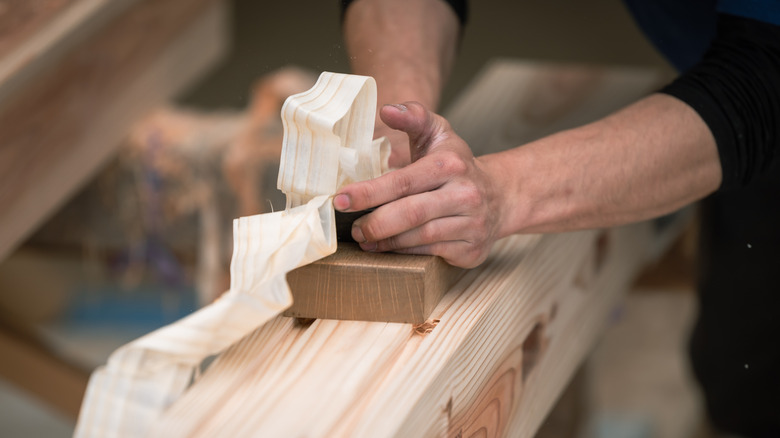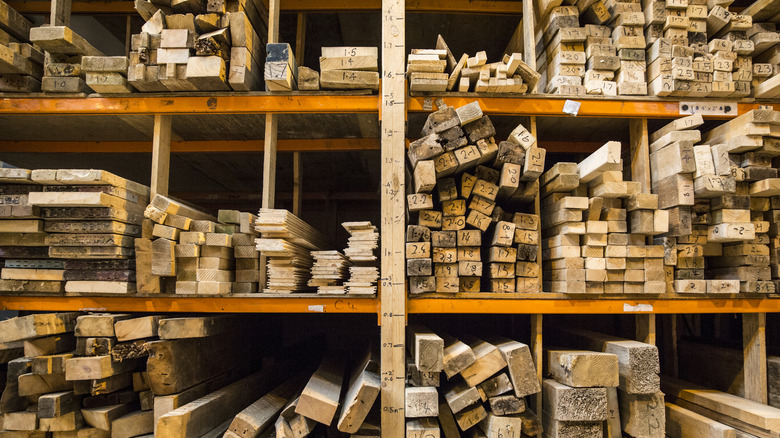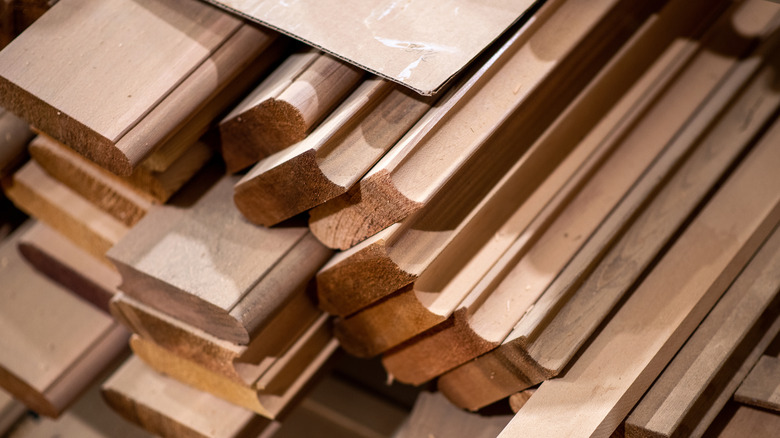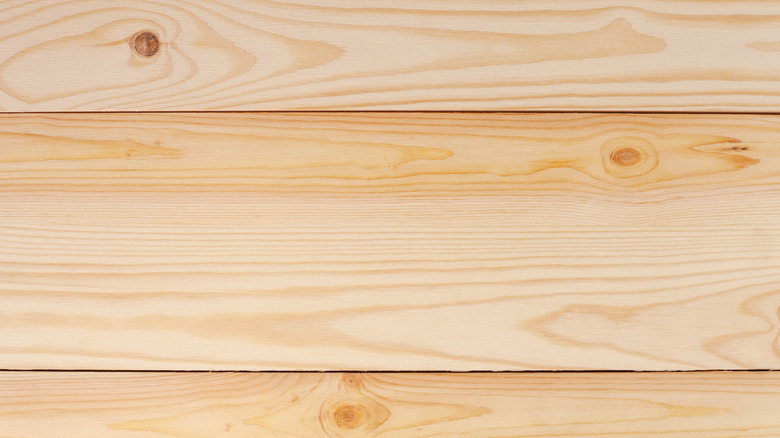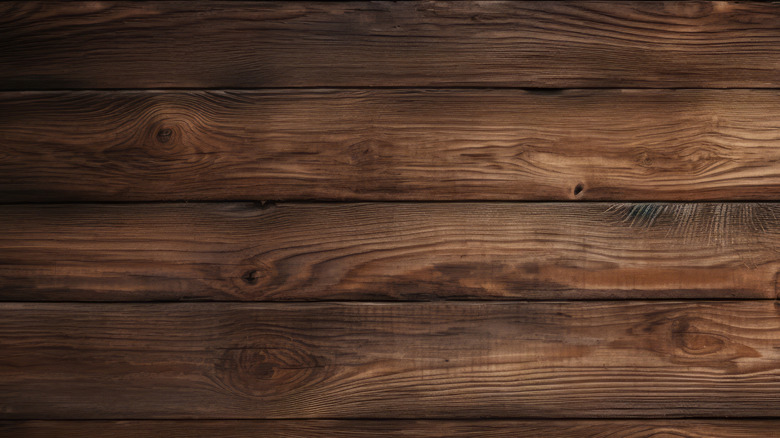Woodworking For Beginners: What's The Best Type Of Wood For Starter Projects?
Woodwork can be an immersive and rewarding hobby for creative individuals who love to work with their hands. Whether you're simply seeking a new outlet for your DIY projects or are hoping to pursue woodwork on a more professional scale, you'll soon see how easy it becomes to find yourself chipping, chiseling, and sanding the whole day away. But no matter your intent with the hobby, the first step to mastering this craft is having the right materials on hand.
While some beginners to the craft may be more focused on obtaining the right tools for the right price, one area that shouldn't be ignored is the kind of wood you use. At the end of the day, this is the component that will make up the literal core of your project, so it pays to take the time to think through what you want. Picking the first plank of wood you find at your local lumberyard or home improvement store may be convenient, but this can turn into a problematic proposition if the kind of wood you've selected isn't up to the demands of your project or winds up being more expensive than you needed.
There is a variety of wood types to choose from that are well-suited for different needs and project types. Picking the type that is best for you will make the difference between a job well done and one that goes nowhere. This guide will help you learn about some of the most important things to keep in mind when choosing the kind of wood to work with and common wood varieties that are best suited for newcomers.
What to consider when choosing wood for your project
Just as with woodwork tools ranging from economical options from Harbor Freight to more premium picks from Ryobi, the kind of wood you use will depend on a variety of factors, such as your familiarity with the medium, aesthetic choices, and budgetary restrictions. Before diving into the specifics of each wood type, it's a good idea to get a broader picture of what to expect from each variety as a whole.
It's easiest to split up the kind of woods out there into two groups, hardwoods and softwoods. Hardwoods, as their names imply, are the heavier and denser of the two, having originated from deciduous trees that possess a more complex biological structure and take over a century to fully grow. You can typically distinguish hardwoods by their more intense grain, darker coloring, and heavier weight. Softwoods typically come from evergreen trees that take far less time to grow, thus producing more supple timber that is lighter in color and weight.
As you can imagine, hardwoods are more suited for projects that require stronger, longer-lasting wood. As a result, this variety is typically more expensive and can be harder to work with for some beginners. Softwoods, while less durable and weaker as a whole, are generally easier to work with and cost less than their hardwood counterparts. And because softwood trees take less time to reach full maturity, they are typically more sustainable and environmentally friendly.
Cedar (Softwood)
For many newcomers to woodwork, softwoods will be the best choice to start with. There's no shortage of choices, including fir, larch, and redwood, to name a few. But without a doubt, one of the most versatile softwoods you'll find out there is cedar. Possessing many attractive characteristics while harboring some unique qualities of its own, cedar has consistently remained one of the most popular choices for good reason.
Among the qualities that set cedar apart is its impressive level of durability for a softwood. While it may not be quite as capable as hardwoods for especially heavy-duty purposes, cedar is quite hardy as it is naturally resistant to rot and decay. Additionally, its strong smell brought on by aromatic oils is a great insect deterrent, preventing intruders such as ants and termites from making a home in and ultimately damaging your work. And like other softwoods, it can be shaped and detailed with relative ease thanks to its lightweight build.
The same smell that makes cedar great at keeping pests at bay may also be irritating to those with sensitive skin or respiratory systems. As a result, it's recommended that users working with cedar do so while outdoors and wearing proper personal protective equipment such as masks and goggles.
Pine (Softwood)
Readily available and easily affordable, pine is among the most accessible woods out there. As its name implies, this wood type originates from coniferous pine trees and varies in color and density, with choices such as white pine, southern yellow pine, ponderosa pine, sugar pine, and spruce pine among many others being commonplace across hobby and home improvement chains. Whatever type you choose, you'll find that this seemingly simple softwood has a lot to offer.
Pine is a stiff and sturdy wood that can withstand the abuse that comes from regular tool work and decoration. This is good, as the light coloration of most pines makes them ideal for painting, giving users a wide array of customization options. It's also able to hold its shape relatively well in the face of natural elements such as moderate humidity and moisture. These qualities, along with its wide availability, make pine great for a wide array of indoor applications, from building door and window frames to being used for structural components for construction.
Of course, being a softwood means that they do some with their limitations. While they can be used for a variety of purposes, they're not quite as versatile as cedar or similarly tough softwoods, as they are more prone to dents and damage from heavy weather. The sap that pine naturally produces can also be detrimental to blades over time, meaning you'll need to take extra steps to maintain your tools after use.
Oak (Hardwood)
Let's say you've already had some fair experience with softwoods and are looking to move on to a more challenging medium. Of the many hardwoods out there to choose from, oak is among the best for newcomers. Those willing to take the time needed to master this wood type can unlock a world of rewarding creative possibilities.
This is another diverse option that comes in a wide array of colors, intensities, and grain varieties. No matter the choice, the rustic charm and rich textural qualities of oak give it endless appeal. But what has ultimately helped oak become so popular throughout the decades is its incredible level of durability. Largely resistant to everything from stains and paints to heavy tool use and the natural elements, the tough construction of oak helps it take a licking and keep on kicking. As a result of this hardiness, not only does oak have an exceptional range of indoor and outdoor applications, but it's generally more forgiving to mistakes than other wood types, which can make it a good choice for hardwood beginners.
As we mentioned previously, hardwoods are more expensive than softwoods. While oak is more affordable than other hardwoods, it can still go for quite a bit depending on the variety. Additionally, while oak is generally durable, it's still important to regularly maintain it to avoid cracking and discoloration.
